In a two-day intensive workshop last summer, Dr. Michael P. Theophilos of the Australian Catholic University offered members of the New Testament Peer Mentoring Group of the University of Zurich a highly informative, hands-on look at the important contributions that numismatic evidence can make for understanding the meaning of Greek words used in the documents contained in the New Testament and related literature.
Participants in this intimate setting were handsomely rewarded with an elaborate 79-page (!) handout, replete with numerous images of ancient artefacts, especially coins and their inscriptions.
An additional treat were the numerous specimens of a variety of monetary instruments, especially ancient Roman provincial coins, Theophilos brought from his personal collection for illustrative purposes.
We met from morning to evening on 26–27 July, 2017, as Theophilos provided the group with the year’s keynote event. The first day was in essence a lengthy introduction. In the second day we dove into case studies. A chair of the biblical lexicography section at the Society of Biblical Literature, Theophilos has noted for years the lack of engagement with numismatic evidence among lexicographers. His workshop drew on material he has been preparing for publication to help remedy the situation. His forthcoming monograph with T&T Clark, Numismatics and Greek Lexicography, is dedicated precisely to this issue.
Day 1 – Introduction
A History of Coins
Before leading us on our journey of discovery to the usefulness of Greek inscriptions on coins, Theophilos provided us with a history of coins. First, however, he offered a brief tour of human engagement with monetary instruments, employing both social-anthropological and historical vantage points. From shells (China, as early as the 13th century BCE), through kissi pennies, that is long metallic wire (Sierra Leon and Liberia, 19th and 20th centuries), and rings of woven feathers (Solomon Islands, 20th century) to the coins, bills and plastic cards that the world is now most familiar with, we surveyed the varied means by which humans seek to secure resources and the power they offer, as well as to facilitate the economic exchange of goods and services. Theophilos often surprised the workshop’s participants with real examples of the phenomena depicted in his presentation slides.
Next our guide narrated the history of coinage, specifically. Beginning with the early gold and silver coins of the Lydians, bearing no inscription, with a simple picture of an animal on the obverse (front) and just a punch on the reverse (back), he brought us to the more sophisticated coins of the Archaic and Hellenistic periods, for which it became customary to have inscriptions, especially, in time, the name of the ruler, along with a portrait of his face.
Portraying the Hellenistic rulers as, above all, associated with the gods and even comparable to them (Alexander as Heracles, Lysimachus as Zeus Ammon etc.), served to re-inforce the image of their power and legitimacy. The basic lesson learned is that coinage so often served not just as a means to facilitate commerce but also – and more – to further the agendas of power structures of antiquity.
Theophilos took us down to the Roman systems of coinage, first in the Republic and then in the early Empire, both of which are modelled on and heavily influenced by their Greek predecessors. Coinage of the Roman Empire, the primary focus for our period of study, is split into imperial and provincial types. Imperial coinage, both in image and inscription, is notably fixated on the personality of the emperor in a more direct way. The texts are characterized by ever-growing title attributions to the emperors, punctuated by a complex system of abbreviations.
Provincial coinage, containing Greek inscriptions, allowed for more variety of representations and content. These coins, constituting the focus of our workshop on lexicography, address relations, at times involving fascinating political factors, between the emperor and the people of specific regions.
For New Testament scholars, a notable point of interest would be, of course, the land of Israel. Indeed, during Theophilos’ historical survey, he devoted a detailed excursus on coins of all types – Persian, Hellenistic, Roman and Jewish revolt coins – that pertain to that region. Involving inscriptions in Paleo-Hebrew, Greek and Latin, various interest groups express their relation to and perspective on the land in which Jesus’ followers and their ancestral people lived and ruled or were ruled over. I might pause here to mention how impressed we were with Theophilos’ breathtaking breadth of knowledge of numismatics. And beyond all of this he is a New Testament scholar and expert in Greek lexicography.
Striking Coins
Along the way, Theophilos described and then illustrated how coins are struck inside a coin die. A large obol-shaped base contains on its top the obverse image of the coins-to-be, formed in the opposite direction of how the struck coins will appear. A lighter lid, containing the reverse’s image (again with the direction flipped), fits on top of the base. A blank (an unstruck coin) is heated and placed on top of the base; the lid is affixed on top; and then the die is literarily struck with a hammer. Eleven surviving die found at the Roman mint in Lugdunum (Lyon, France) contain a curious specimen. One die actually has a denarius still lodged in it, offering a wonderful picture of coin striking in action, as it were.
The way coins were made meant that they could be re-struck. This action, in itself, could have political implications. A notable example is the making of revolt coins of the First Jewish Revolt, employed the Tyrian shekel. Prior to the revolt, the Tyrian shekel, though it boasted both a bust of the god Melkart and the inscription ΤΥΡΟΥ ΙΕΡΑΣ ΚΑΙ ΑΣΥΛΟΥ (“of Tyre, the holy and inviolable”), was the exclusive coin accepted by the temple authorities in the late Second Temple period.
These shekels were reminted by the revolters to contain objects sacred to Jewish practices and to say, in paleo-Hebrew script, ירושלים הקדושה (“Jerusalem, the holy”).
Then, in the Bar Kokhba revolt, the Tyrian shekel was once again recast as a coin with Hebrew inscription, now also with an image of the temple in Jerusalem. (Note the coin pictured below is another recast coin from this revolt.)
Authentication and Counterfeits
Another preliminary topic, perhaps especially important for non-specialists, is the problem of authentication and, conversely, counterfeits. Counterfeit coins are made in four ways: tooling or “cleaning” an existing coin into something else; using a cast with a clay mould; making a mould with electroplating (electrotyping) and striking an actual die. The last of these produces the worst fakes, because they can more easily trick specialists. Authenticating coins involves tests to prove that none of the four abovementioned processes have occurred. For example, patina will be missing in the grooves, when an authentic ancient coin has been tooled so that the hair stands out in more relief. (If such a counterfeit fools a buyer, the coin would be sold for more than its original worth, prior to tooling, on account of its appearance seeming to be preserved in more pristine condition.)
There are ten kinds of patina, some being more common than others. The different kinds are identified by their widely varying colors, which include “chocolate,” “forest green,” “blue” and “red”; Patina not only looks nice, it helps preserve the coin over the centuries. Another practical help is its effect of highlighting or emphasizing the parts of the coin that are in relief. Watch out though, you have to learn to distinguish between patina and bronze disease – the latter, if it gets into your collection, can destroy all your precious coins!
Day 2 – Cases Studies for Greek Lexicography
ΚΤΙΣΤΗΣ
One example that Theophilos examined with us in some detail is the word κτίστης. While the related noun (κτῖσμα) and verb (κτῖσαι / κτίζειν) appear frequently enough (4 and 15 instances, respectively) in the New Testament, our word is a hapax legomenon. It is understood by both BDAG and Louw-Nida in 1 Peter 4.19 as referring categorically to a cosmological creator, conceived of as a distinctly Jewish, also Christian, category. However, when the evidence from Roman provincial coinage is consulted, the interpretive possibilities are immediately broadened. Coins frequently use κτίστης to refer to the founder of a city. Both gods and contemporary human rulers are relevant. On a coin commemorating Tiberius’ restoration of Magnesia, following the earthquake of 17 CE that shattered 12 cities in the province of Asia, Tiberius is recognized as the founder. The obverse of RPC 1 2451 reads ΤΙΒΕΡΙΟΝ ΣΕΒΑΣΤΟΝ ΚΤΙΣΤΗΝ (“Tiberius Augustus founder”). The reverse has an image of the emperor restoring the goddess Tyche, as a symbolic act. Another example is RPC 1 2495, illustrated below from Theophilos’ personal collection, which has on its obverse ΣΕΒΑΣΤΟΣ ΚΤΙΣΤΗΣ (“augustus founder”) and on its reverse ΚΛΑΖΟΜΕΝΙΩΝ (“of Klazomenai”).
RPC 1 2495
The numismatic evidence shows clearly that describing an emperor as the founder of a city, on the one hand, constitutes a claim to trustworthiness, prestige and, importantly, power. The emperor has the power to establish and, thereafter, rule centers of human civilization. On the other hand, it bestows upon the city in question, along with its citizens, an elevated status, marked as worthy of receiving imperial attention. Out of comparative interest, Theophilos showed how also some coins from the land of Israel contain our word with the sense in question. Archelaus and Philipp the tetrarch are each called κτίστης. Thus, in 1 Peter 4.19 the author, using terminology widely known to reflect Roman imperial ideology, employs it to reassert the Jewish God’s ultimate control over the world powers. For the rest of the fascinating details I direct the reader to Theophilos’ essay, “Κτίστης (1 Peter 4:19) in Light of the Numismatic Record,” pages 191-205 in Biblical Greek in Context: Essays in Honour of John A. L. Lee (ed. T. Evans and J. Aitken; Leuven: Peeters, 2015).
ΦΙΛΟΙ
Theophilos’ handout addressed three other main case studies, each generously illustrated with pictures of the coins in question. Our guide brought numismatic evidence to bear on the question of Jesus’ “friends” in John 15.14. The disciples are declared his “friends,” if they do what he tells them. This idea draws on court loyalty, traceable back to the time of Alexander, expressed with gusto in the Roman imperial period, as is vividly illustrated on provincial coinage. In the abstract of Theophilos’ article on the topic, published after the workshop, he writes, “The inclusion of specific political terminology on Roman coins (for example, ΦΙΛΙΑ; ΦΙΛΟΚΑΙΣΑΡ; ΦΙΛΟΚΛΑΥΔΙΟΣ; ΦΙΛΟΡΩΜΑΙΟΣ; ΦΙΛΟΣΕΒΑΣΤΩΝ) was one way in which elite concepts of political friendship, evidenced in Cicero and Seneca, were communicated to the masses.” Roman emperors bestow the honour of “friendship” as a means of legitimation of certain puppet kings and other governing functionaries who follow the party line. In this context “friendship” is an honor that is active; it must be maintained. Coins show one powerful way of how this honor of friendship with the Caesar could be publicly displayed for a broad audience. The plausibility of the reading that Theophilos promotes in the instance in question in John is reinforced by comparison with the accusation levelled later against Pilate that he is not a “friend” of Caesar, because he seems to be favoring another would-be king (19.12). Theophilos’ study here shows how attention must be paid to the immediate context in which a common word appears in our literature, especially if in a lexicon the headword (the main entry) has multiple definitions. (For further details see Theophilos, “John 15.14 and the ΦΙΛ- Lexeme in Light of Numismatic Evidence: Friendship or Obedience?,” New Testament Studies 64 [2018]: 33-43.)
ΝΕΩΚΟΡΟΣ
Theophilos gave us another look at material he was preparing for publication, which has been published since the workshop. The use of νεωκόρος in Acts 19:35 does not constitute an anachronism read back from the second century into the first, Theophilos contends. Rather, properly understood, its use in our text can well be situated within the middle of the first century, as part of the development of the city of Ephesus’s devotion to Artemis, a trajectory that is documented in the numismatic evidence. (See Theophilos, “Ephesus and the Numismatic Background to ‘νεωκόρος,'” pages 299-332 in The First Urban Churches 3: Ephesus [ed. James R. Harrison, L. L. Welborn; WGRWSup 9; Atlanta, Ga.: SBL, 2018].)
ΧΑΡΑΚΤΗΡ
Finally, Theophilos shows that χαρακτήρ, “rather than necessarily being understood as ‘exact imprint,’ ‘representation,’ ‘impression,’ etc., can refer to the authenticating mark of a ruler, official or superior” (“The Numismatic Background of ΧΑΡΑΚΤΗΡ in Hebrew 1:3,” Australian Biblical Review 64 [2016]: 69-80, 69).
Although I would have preferred to offer here in this blog a fuller picture of this day’s look at numismatics and Greek lexicography, constituting the workshop’s central concern, I respect the presenter’s wishes to have me direct readers to the printed versions of his lexicographical studies. Unfortunately, the vast majority of the images of the coins and inscriptions for these studies are under copyright and so they also could not be reproduced here.
Related Topics and Learning Activities
The two-day workshop involved discussion of further topics and learning activities for the participants in areas related to ancient numismatics. The topics covered included the visual portrayal of various locations and objects and socio-political actions, such as the portrayal of imperial might and legitimacy through images of the port of Ostia and the Temple of Janus at the Ara Pacis Augustae; the visual representation of the “gift”; the importance of adoption by Caesar. The radiant crown (resembling the rays of a shining heavenly body), frequently represented on coins, bears directly on the crown of thorns placed on Jesus’ head. This was meant not primarily as a form of torture but as mockery of the rejected would-be king being crucified. Theophilos also discussed the relevance of “son of god” and “king of kings” claims, as represented in coins, for the New Testament.
We also looked at more technical subjects, such as the relations among the denominations of both Roman and Greek coins. At one point, Theophilos offered a survey of modern literature and digital resources for numismatics – a very informative, oral annotated bibliography of sorts.
One helpful activity had participants dating imperial coinage (so, using Latin), by analyzing the detailed attribution of Tribune years, years of consulship and other functions to the Caesar in question and comparing the information to a master table for all Caesars, culled by Theophilos from various sources.
Another memorable activity had all of us looking at documentary papyri to determine the prices of various goods (including human slaves!), as well as the wages for various professions, based on the skill level of the one offering the service. Through the exercise, Theophilos dispelled for us once and for all the common misconception that in the later Roman imperial world a common wage for a day labourer is a denarius. In actual fact, it is usually quite a bit less than this. Whereas, for example, in P.Oxy 390 (1st century CE) a guard is paid 1 drachm per day, a labourer is paid only 4 obols in P.Oxy 985 (1st century CE). In that century, a drachm was worth 6 obols. Thus, the vineyard owner in Matthew 20 who pays each of his workers a denarius is a very generous person – even to those who worked all day!
Taking leave of the ancient world
As is customary in the New Testament peer-mentoring workshops of the University of Zurich, the culinary component is a notable aspect of the experience. This workshop was no exception to the rule. At lunch in local restaurants, the workshop’s participants enjoyed relaxing and interacting with one another in a more casual setting, while the meals also allowed for more personal interaction with Theophilos. The workshop concluded with a delicious meal at Hiltl.
As the event organizer (and as a friend), I had the added pleasure of accompanying Theophilos to coin cabinets in Wintertur and Zurich, where I watched him make progress in his current research through discoveries made while examining these collections.
Epilogue
An expert pedagogue who adeptly guides learners in the process of discovery through interesting, though at times unfamiliar, territory, it is no surprise that in 2012 Theophilos was awarded the Australian Government Citation for Outstanding Contributions to Student Learning for the adoption of innovative and exciting approaches to teaching biblical languages and history. Theophilos is currently writing an innovative textbook for Hellenistic Greek that utilizes inscriptions and papyri – employing actual images in addition to transcriptions – for teaching vocabulary, morphological forms and points of grammar. It is my understanding that it will be possible also to harvest the textbook for illustrations, for use in coordination with more traditional textbooks. Godspeed, Michael – we look forward to this resource for ancient Greek learners and teachers!
Jordash Kiffiak is a research associate at the University of Zurich. He is currently writing two monographs. One investigates whether Jewish or non-Jewish miracle stories provide a better context for understanding the response motif found in the Gospels. The other addresses the issue of pseudepigraphy in 2 Baruch. He is the author of Responses in the Miracle Stories of the Gospels: Between Artistry and Inherited Tradition (Mohr Siebeck, 2017) and Living Christian Aramaic: Introduction Part 1 (Biblical Language Center, 2017), a textbook for beginner’s Syriac, co-authored with Niek Arentsen and Randall Buth. Since 2007 he has taught ancient languages – biblical Hebrew, Syriac and, especially, Hellenistic Greek – using innovative, communicative approaches at various institutes, including the University of Zurich.


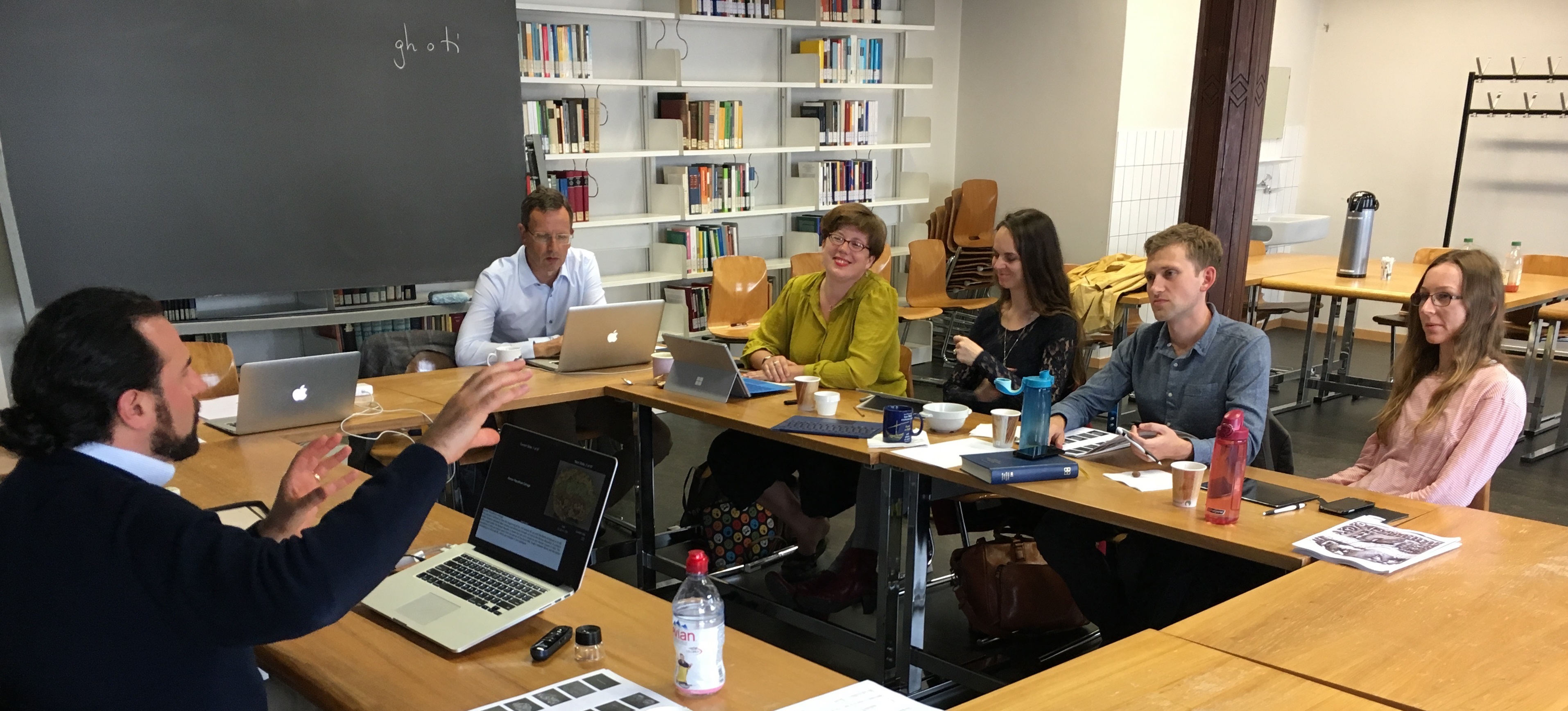
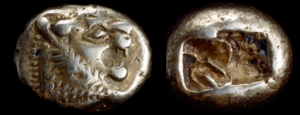

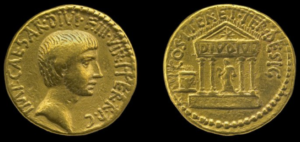
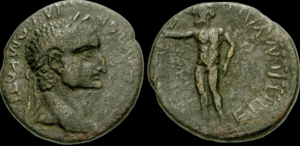
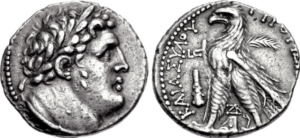
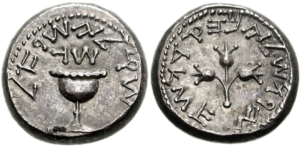
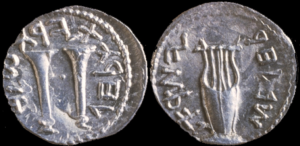

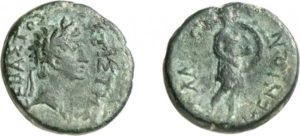



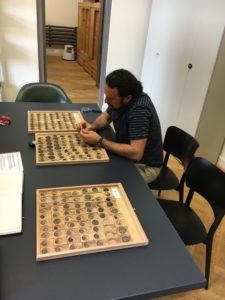

1 Kommentar vorhanden
1 Workshop on Numismatics and the NT | Larry Hurtado's Blog // May 3, 2018 at 17:51
[…] I cross-post a summary of what must have been a highly stimulating workshop on the contributions of Roman-era numismatics to NT lexicography: here. […]
Kommentar schreiben